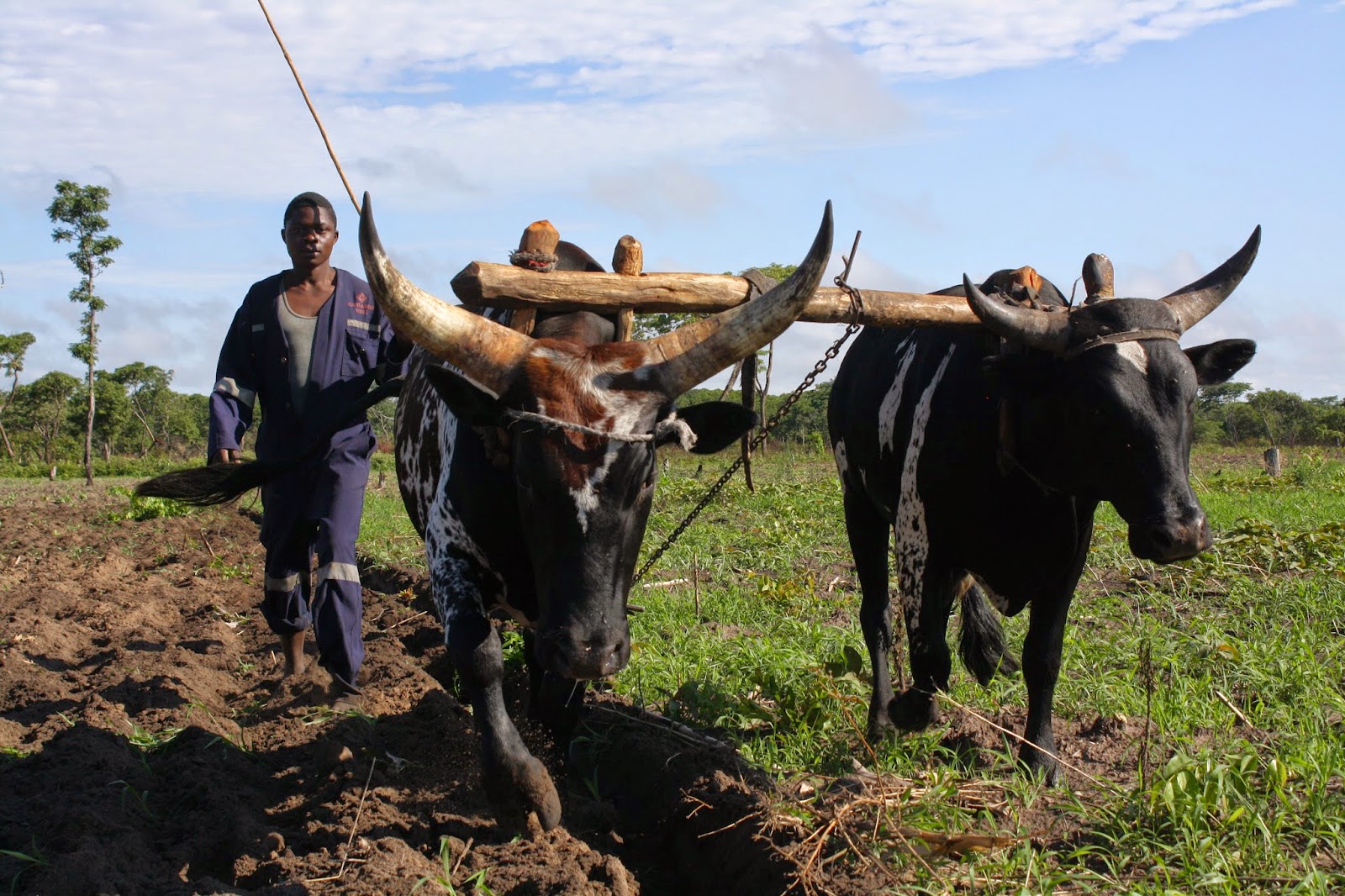Clanking. The bells around the necks of the cows moving past are clanking together and behind them are what? More cows. Clank, clank, clank. I'm now in Southern Province for my last year and this is a common sound: the clanking of cow bells.
 |
| The gray cow is a good example of the Tonga breed of cow. Often found throughout Southern Province it provides better resistance to disease and pests as compared to other outside breeds. |
Like much of the semi-arid and arid ranges across our planet livestock production reigns as the predominate way of making a living. The land is too nutrient poor and scarce of water
for crop production to take off in any meaningful way, so people have
adapted and taken to lifestyles which promote goats and cows. This is
where the Tonga tribe lives - in Southern Province: a dry, dusty place.
Southern Province is largely made up and populated by the Tonga tribe. A fairly proud people that historically didn't take a lot of crap from the other tribes. For them the cow is life. It's a way of judging a man's worth, deciding your own sense of pride, and even a way of storing money. Cows - and livestock in general throughout the developing world - act as village banks and insurance policies for villagers. Need money for your kids' school fees? A sudden illness? Have that itch to put a lot on red? Well, it's easy enough sell a cow or two and get that much needed cash.
 |
| Southern Province for much of the year is dry place. Typically cows have to be given water twice a day if there aren't any open sources of water nearby. |
Through my very rough and primitive research I've found that a cow is worth about $800 a head (although sometimes much more), and when most families have a few cows (it isn't unheard of to come across a family with over 100) that can add up to a lot of money for a rainy day.
With the cows come cow pies, flies, the previously mentioned bells, and a tradition of herding these beasts.
The local variety is simply called the Tonga cow. Original, eh? The breed has been raised to provide increased resistance to the region's hardships: occasional droughts, pests, children constantly throwing rocks. Tonga cows are good, but if you want a good quality cow in Zambia's Southern Province then you should go for the Tonga-Brahman hybrid.
Brahman cows hail from the United States, but began with original stock from India. This cow has thicker skin which helps to prevent disease transmission from insects and the meat is a superior quality - a top dollar kind of thing.
 |
| With its roots hailing from India, Brahman cattle were brought to the United States, Brazil, Australia, and numerous other countries for meat production. |
The Tonga-Brahman hybrid costs more money to initially buy, but the payoff in it's ease of maintenance and better price per pound of meat makes it the envy of ever Tonga herder's eye.
Tongas are so attached to their cows that it actually acts as an Achilles heal in that so much of their livelihoods are wrapped up in one thing that any shock or stress to their cow herds can have a lasting ripple effect.
For example, in 2009 Zambia's Southern and Western Provinces were drenched in rainfall causing massive flooding throughout the region. Fearing for their cows lives the Tongas pushed their cows into massive herds and located them atop the higher regions of the area to escape the flooding. Little did they know some of their cows were infected with a devastating lung disease called contagious bovine pleuropneumonia (CBP). Once CBP started to spread it went like fire through tinder. In a matter of months 90% of the region's cows were killed by the disease or by a government supported culling. The Tongas livelihoods had been reduced by 90% and now that village insurance policy was nearly negligible. A truly sad story, but an important one to keep in mind as extreme weather events are taking hold and becoming more and more common.













